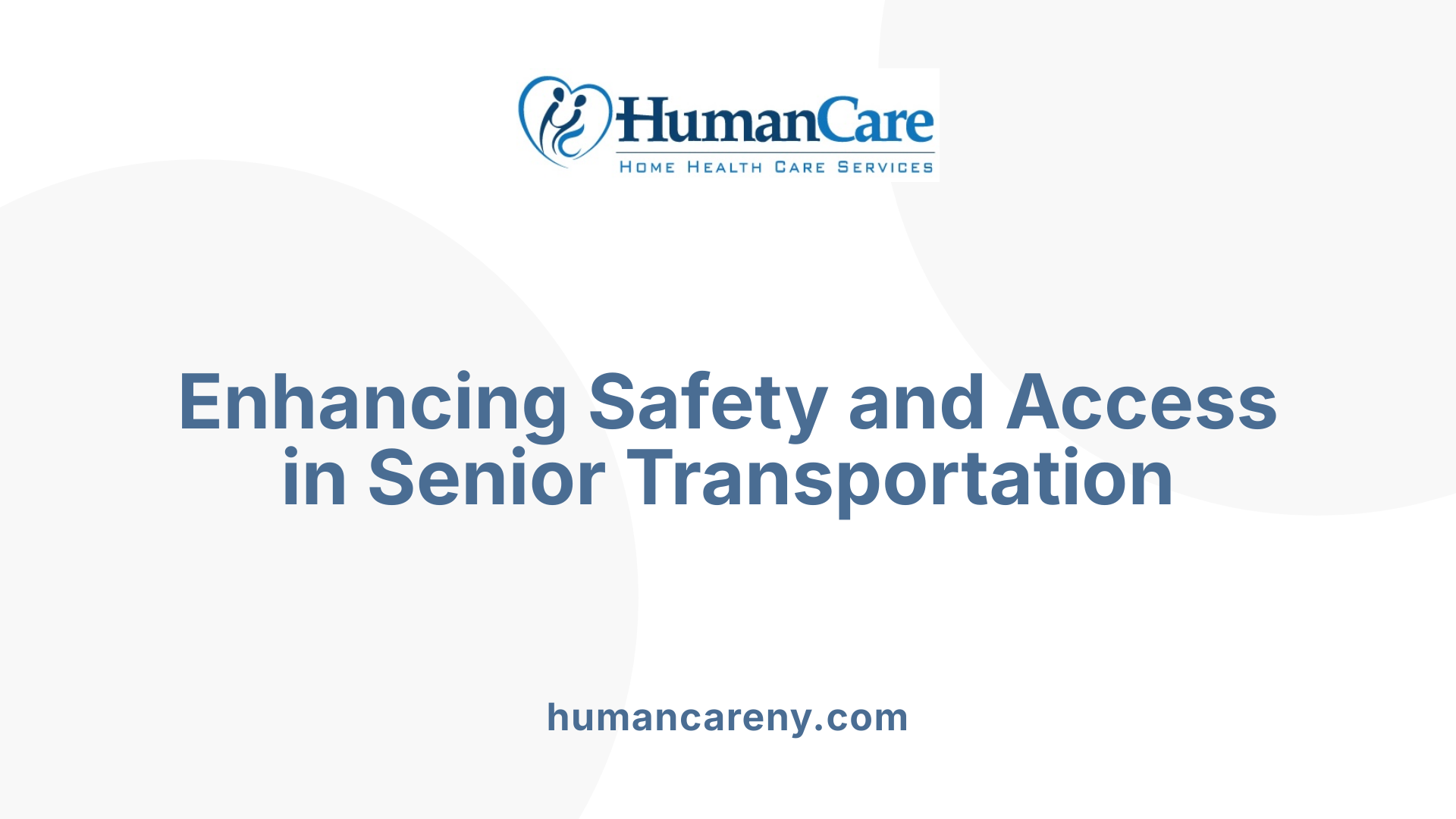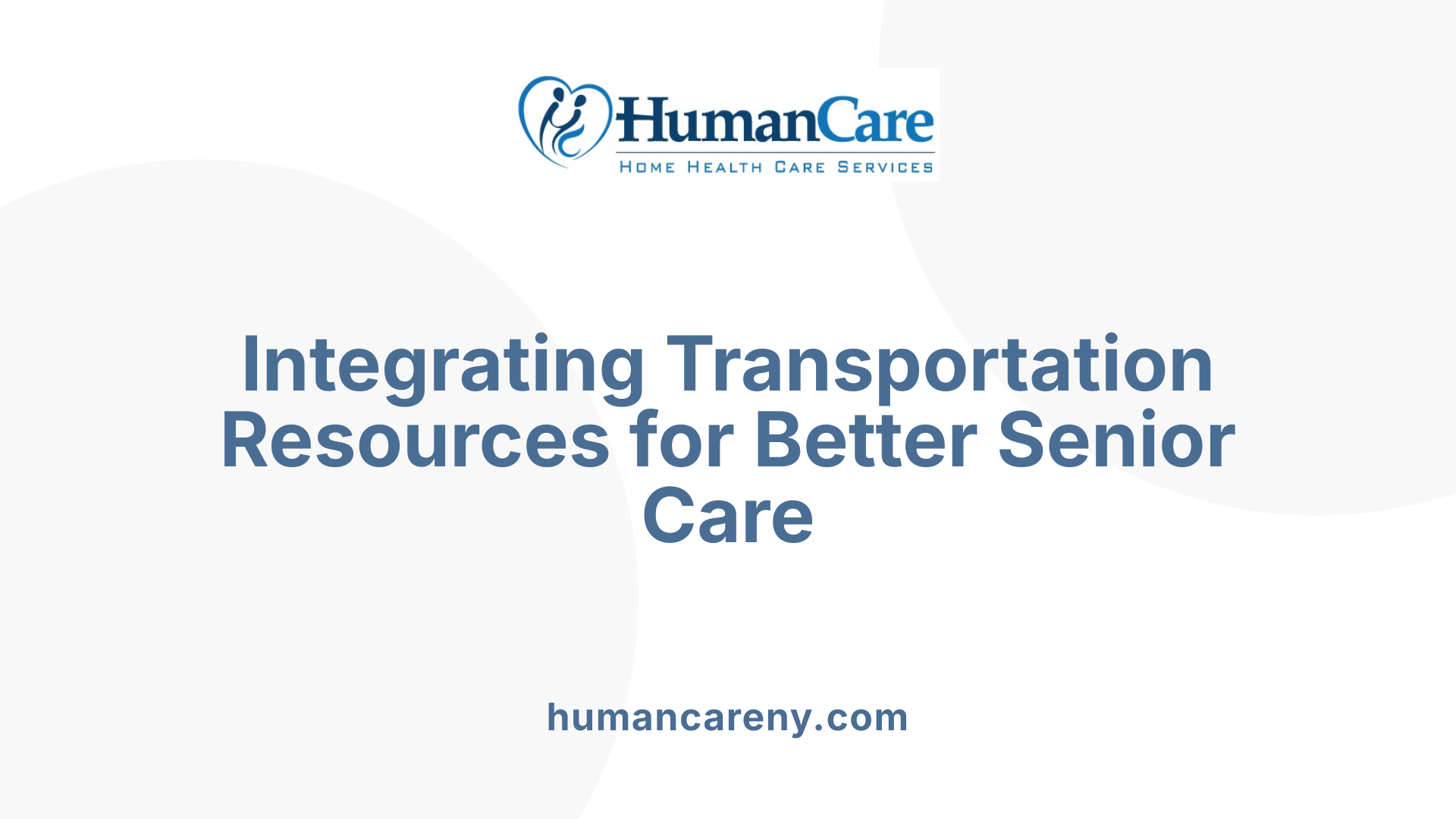Connecting Seniors to the Community
Transportation is a vital component of senior independence and well-being. Companion caregivers play a crucial role in facilitating safe, reliable, and accessible transportation options, ensuring older adults and people with disabilities remain engaged in their communities and receive necessary healthcare services. This article explores how these caregivers assist with transportation needs, the scope of their services, safety considerations, available resources, and the broader impact on senior quality of life.
The Scope of Transportation Services Provided by Companion Caregivers

What scope of transportation services do companion caregivers typically provide?
Companion caregivers play a vital role in helping seniors stay connected with their community and maintain their independence through various transportation services. Their primary responsibility is to accompany older adults to a wide range of destinations, including medical appointments, social outings, errands, and activities that contribute to their quality of life.
These caregivers ensure that seniors reach their destinations safely and comfortably. They assist with navigating different transportation modes such as public buses, paratransit services, microtransit, and ride-sharing options like Uber or Lyft. Their support often includes helping seniors board and alight from vehicles, securing mobility aids such as walkers or wheelchairs, and ensuring that the senior feels comfortable throughout the journey.
Transportation support provided by companion caregivers can be scheduled regularly for routine appointments or arranged spontaneously as needed. They help plan trips in advance or organize rides on short notice, based on the senior's needs. This flexibility facilitates access to healthcare, shopping, social events, and community participation.
Furthermore, caregivers may support seniors in accessing accessible transportation options, ensuring that mobility challenges do not hinder participation in important activities. Their presence can ease the anxiety associated with traveling alone and provide reassurance.
Overall, their scope of transportation services encompasses more than just getting from point A to B. It involves facilitating safe, reliable, and enjoyable travel for seniors, which in turn fosters social engagement and ongoing healthcare management. By assisting with boarding, securing equipment, and providing companionship, caregivers help seniors navigate a variety of transportation systems tailored to their individual needs.
In summary, companion caregivers offer comprehensive transportation support designed to promote mobility, support independence, and enhance the overall well-being of older adults. Their services help seniors access medical care, social activities, and essential errands, ensuring they remain active and connected within their communities.
Roles and Responsibilities of Companion Caregivers in Transportation Support

What roles and responsibilities do companion caregivers have in assisting with transportation for seniors?
Companion caregivers play a crucial role in helping seniors travel safely and comfortably. Their main responsibility is to accompany older adults to essential destinations such as medical appointments, social activities, and errands. By doing so, they ensure that seniors reach their destinations securely and without undue stress.
In addition, these caregivers often assist with logistical tasks like scheduling or arranging transportation through various services. For seniors with mobility challenges, they may coordinate access to specialized transportation options such as taxis, community shuttles, or paratransit services.
While companion caregivers usually do not operate the transportation vehicles themselves, they support mobility by helping seniors navigate the process, prepare for trips, and handle any equipment like walkers or wheelchairs. This support helps maintain the senior’s independence while reducing the risks associated with traveling alone.
Monitoring the elderly’s well-being during transit is another vital role. Caregivers keep an eye out for signs of fatigue, discomfort, or emergencies, and are prepared to address issues that may arise during the trip.
They also facilitate access to transportation for those with mobility difficulties by helping with adaptive devices and ensuring the senior's safe entry and exit from vehicles.
Ultimately, companion caregivers serve as a bridge to essential services and social interaction, supporting seniors in maintaining their independence and well-being. Their efforts help eliminate transportation barriers, promoting continuous access to healthcare, community participation, and daily necessities.
Methods and Approaches to Supporting Transportation Needs

How do companion caregivers support the transportation needs of seniors?
Companion caregivers play a vital role in helping seniors navigate their mobility challenges and access essential services. They support seniors by accompanying them on trips to medical appointments, grocery stores, social events, and community activities. During these excursions, caregivers focus on ensuring the safety and comfort of the seniors, providing a reassuring presence that reduces the stress associated with travel.
A significant aspect of their support involves pre-trip preparations. Caregivers assist seniors with tasks such as bathing, dressing, and medication reminders, which help seniors get ready efficiently and safely for outings. This preparation not only ensures that seniors are physically ready but also reduces the risk of forgetfulness that could hamper their safety during trips.
Using specialized transportation services is another common approach. Depending on the senior’s mobility needs and preferences, caregivers may arrange rides through Uber Assist, Uber Health, SilverRide, Lyft, or local transit options designed for seniors. These services often provide accessible vehicles equipped to handle walkers, wheelchairs, or other mobility aids.
Arranging transportation can involve coordination with local providers, volunteer programs, or public transit systems. Caregivers often stay with seniors during their appointments or outings, offering companionship and assistance throughout the trip. This ongoing support helps seniors remain independent, socially engaged, and able to access healthcare and community services.
Overall, caregivers contribute significantly to sustaining seniors’ independence and well-being by integrating various methods—personal accompaniment, preparatory assistance, and leveraging specialized transportation options—into their care routines.
| Method of Support | Description | Additional Details |
|---|---|---|
| Accompanying seniors | Traveling together to appointments or errands | Ensures safety, provides companionship |
| Assistance with adaptive equipment | Helping with walkers, wheelchairs, mobility aids | Necessary for mobility-challenged seniors |
| Trip preparation | Reminders, dressing, medication management | Facilitates smooth trips and safety |
| Utilizing specialized services | Uber Assist, Lyft, SilverRide, local transit | Accessible options tailored for mobility needs |
| Coordination with providers | Scheduling and managing transportation | Ensures timely and reliable trips |
This comprehensive approach enables seniors to maintain their independence and actively participate in social and medical activities, ultimately enhancing their quality of life.
Benefits, Safety Measures, and Resources in Transportation Assistance

How do companion caregivers enhance senior independence, social engagement, and access to healthcare?
Companion caregivers play a vital role in supporting seniors’ mobility and social participation. By assisting with transportation to medical appointments, social outings, grocery shopping, and community events, they help seniors maintain their independence and stay engaged in life. This support reduces feelings of loneliness and social isolation, which are common among older adults.
Transportation assistance from caregivers ensures seniors can access healthcare services promptly, improving health outcomes. It also encourages participation in hobbies and leisure activities that enhance mental and emotional well-being. Such services are customized to meet individual needs, including helping with mobility aids, organizing transportation schedules, and providing companionship during trips.
Overall, these efforts promote a higher quality of life by enabling seniors to remain active, engaged, and connected to their community.
What safety practices, staff training, and vehicle safety features are involved in transportation services?
Safety is a top priority in transportation assistance for seniors. Caregivers and transportation providers are trained to handle special needs, including mobility challenges and medical emergencies. Staff training emphasizes sensitivity, emergency response procedures, and proper handling of mobility aids such as walkers and wheelchairs.
Vehicles used for senior transportation often include safety features like wheelchair accessibility, seat belts, non-slip flooring, and climate controls. Some services are equipped with GPS tracking and monitoring systems to ensure timely and safe trips. Emergency response systems and health monitoring technologies may also be incorporated, helping to minimize risks such as falls or health crises during transit.
These safety measures ensure that seniors travel securely and comfortably, giving peace of mind to both caregivers and families.
What accessible transportation options and travel training resources are available for seniors?
Multiple transportation options cater to seniors’ diverse needs, including public transit discounts, paratransit services, on-demand ridesharing like Uber Assist or Lyft, Medicaid non-emergency medical transportation (NEMT), and volunteer community services.
Accessible transportation options include wheelchair-accessible vehicles, low-floor buses, and specialized travel training programs. Travel training helps seniors learn how to use transit systems confidently and safely, promoting greater independence.
Programs provided by organizations such as the Eldercare Locator or Area Agencies on Aging help connect seniors and caregivers with these resources. Funding through federal grants, including FTA Section 5310 and Tribal Transportation initiatives, supports the development and maintenance of accessible transportation infrastructure.
These resources empower seniors to navigate their communities safely, independently, and with confidence.
Which resource programs support senior transportation needs, and how do they work?
Several support programs are designed to meet the transportation needs of seniors and those requiring assistance. Medicaid’s Non-Emergency Medical Transportation (NEMT) provides coverage for trips to medical appointments using accessible vehicles, with eligibility and ride limits. Public transit agencies often offer discounted fares or special passes for seniors.
Federal initiatives like the Federal Transit Administration’s (FTA) Section 5310 program fund vehicle purchases and mobility management services for older adults and individuals with disabilities. Tribal Transportation programs support transportation services in Native communities.
Volunteer programs run by nonprofit and faith organizations offer free or low-cost rides, often with consistent drivers to provide familiarity and comfort.
These programs work collaboratively to bridge transportation gaps, ensuring that seniors can access essential services and maintain their independence, ultimately contributing to their health and well-being.
Integrating Transportation in Broader Senior Care Strategies

How can resource options support transportation needs within companion care services?
Transportation plays a crucial role in enabling seniors to maintain independence, participate in social activities, and access vital healthcare services. To effectively support these needs, a variety of resource options are available that cater to different circumstances and mobility levels.
Local transportation services, public transit systems, and specialized programs like Medicaid's non-emergency medical transportation (NEMT) are fundamental resources. These services ensure that older adults can attend medical appointments, run errands, or socialize without the stress of driving or navigating unfamiliar routes.
Organizations such as the Eldercare Locator and Area Agencies on Aging serve as gateways to trustworthy transportation resources. They help connect caregivers and care recipients with community-based programs, volunteer drivers, and transportation agencies that offer reliable assistance.
Ride share services like Lyft and Uber help bridge the gap for spontaneous or short-notice trips. Uber Assist and Uber Health are tailored options designed specifically for seniors and individuals with disabilities, offering accessible vehicles with trained drivers who can provide necessary mobility support.
Funding and development of transportation options are also supported through federal and state initiatives. The Federal Transit Administration (FTA) Section 5310 program and Tribal Transportation initiatives provide financial support to develop accessible transit services. These programs help expand the availability of specialized transportation, especially in rural or underserved areas.
Enhancing transportation usability through transit training programs and accessible vehicle options ensures that older adults, including those with mobility challenges, can confidently and safely use these services.
In summary, a combination of public, private, and nonprofit resources creates a comprehensive network that supports older adults' transportation needs. These options empower caregivers within companion care services to facilitate consistent, safe, and independent mobility, thereby improving overall health outcomes and quality of life for seniors.
Maintaining Mobility for a Fulfilling Life
Companion caregivers are central to enabling older adults to stay active, independent, and socially connected through comprehensive transportation support. By coordinating with various resources and employing safe, personalized assistance methods, they help seniors overcome mobility challenges and access the vital services and activities that enrich their lives. The integration of reliable transportation within senior care not only promotes health and safety but also fosters dignity and community engagement, ensuring seniors can age in place with confidence and comfort.
References
- Senior Transportation Services Caregivers Need to Know - AARP
- Errands & Transportation Services | Family Resource Home Care
- Senior Transportation Services | Right at Home
- What Are Some Transportation Resources for Seniors?
- Safe & Effective Transportation for Seniors
- What Can a Companion Caregiver Do For You? - Visiting Angels
- Companion Care for Seniors - Uplifting Care and Friendship
- Companion Care | Homemaking Services | Right at Home
- Transportation for Seniors - Papa



